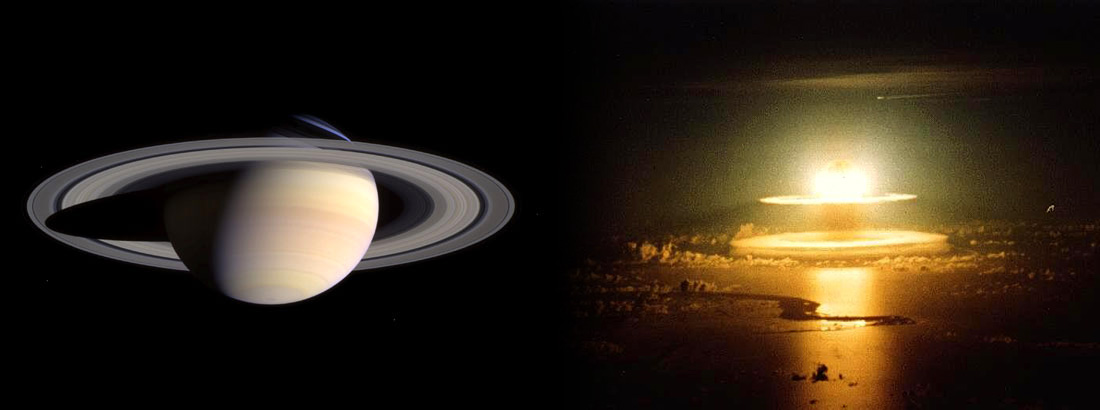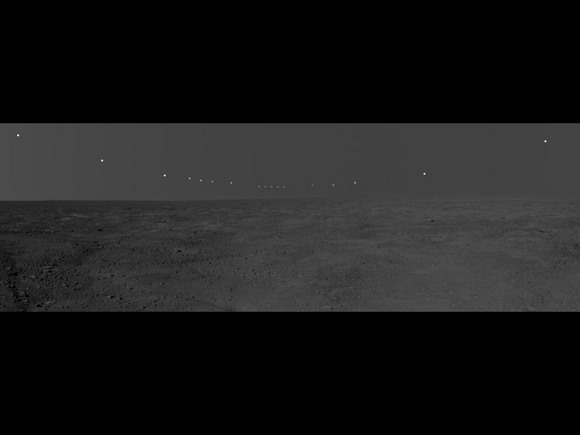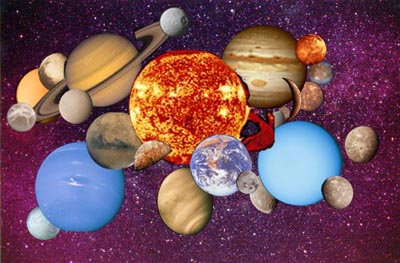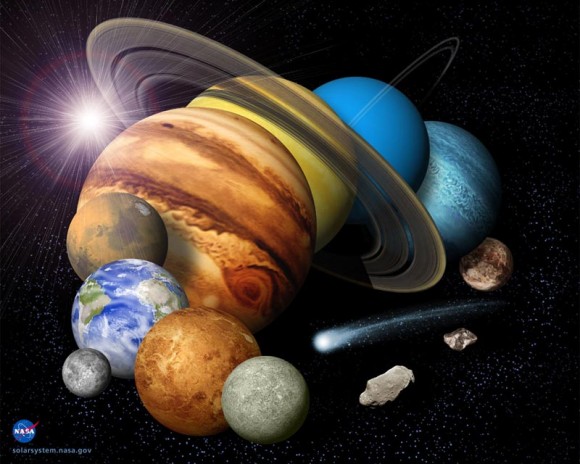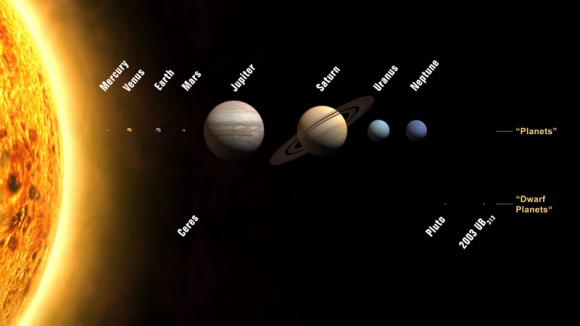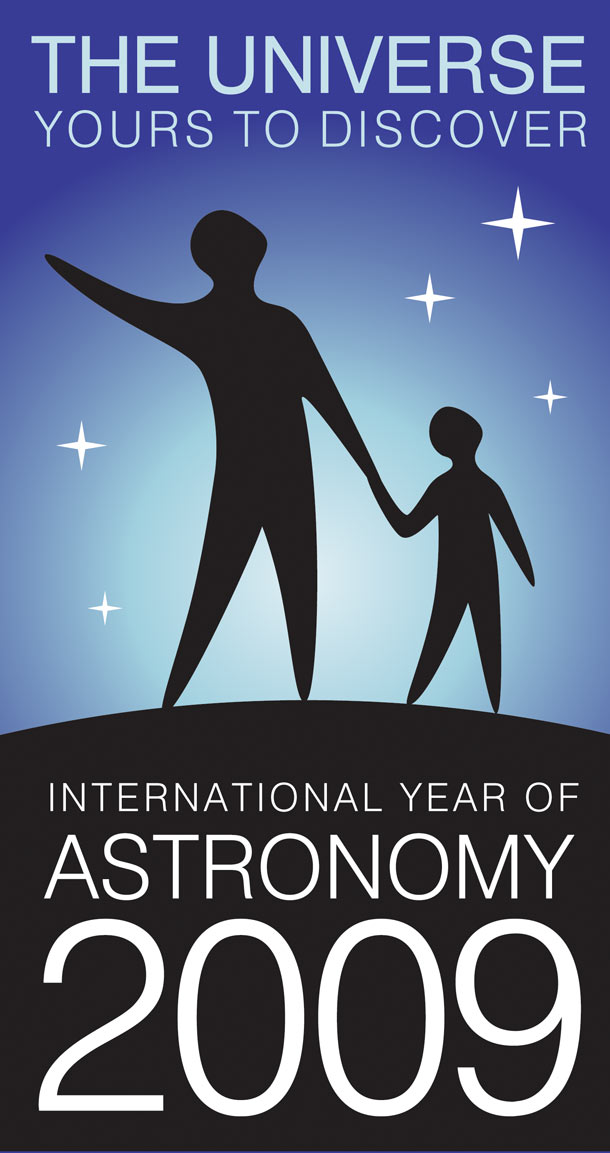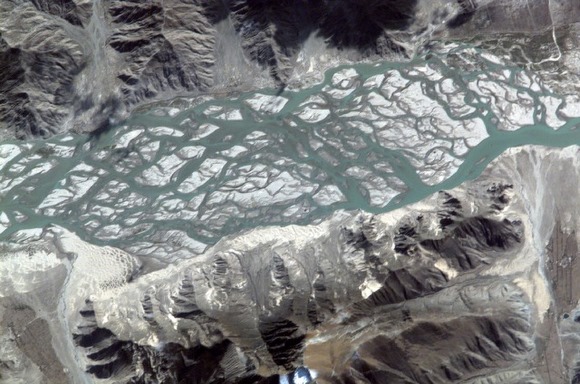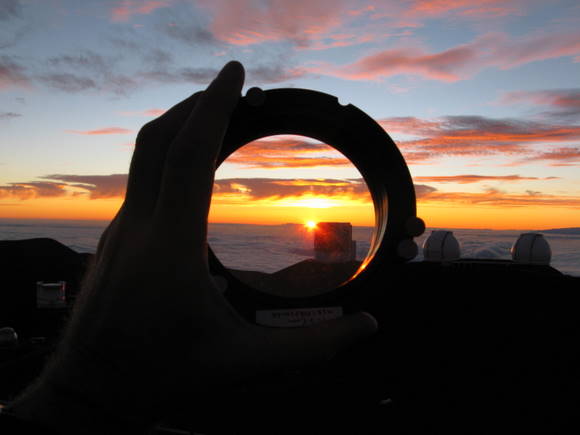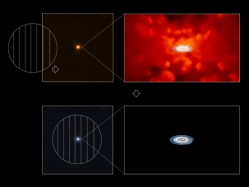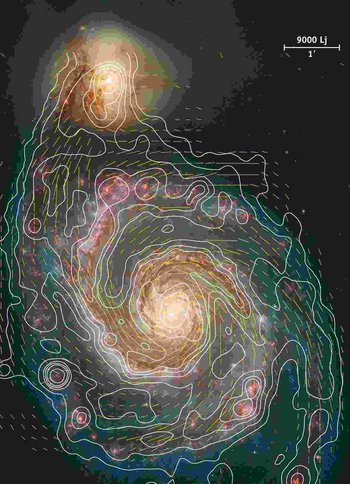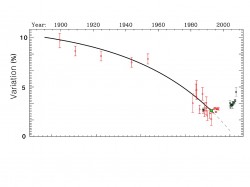[/caption]
The story: On October 15th 1997, the Cassini-Huygens mission blasted off from Cape Canaveral Air Force Station to explore Saturn and its moons. It continues to study the ringed gas giant today and its mission has been extended till 2010. Cassini is is powered by 32.8 kg (72 lbs) of plutonium fuel. A radioactive power source is the only option for missions travelling beyond the orbit of Mars as sunlight is too weak for solar panels to be effective. However, NASA (in association with secret organizations, such as the Illuminati or the Freemasons) wants to use this plutonium for a “higher purpose”, dropping Cassini deep into Saturn at the end of its mission where atmospheric pressures will be so large that it will compress the probe, detonating like a nuclear bomb. What’s more, this will trigger a chain reaction, kick-starting nuclear fusion, turning Saturn into a fireball. This is what has become known as The Lucifer Project. This second sun will have dire consequences for us on Earth, killing millions from the huge influx of radiation by this newborn star. Earth’s loss becomes the Saturn moon Titan’s gain, suddenly it is habitable and the organizations playing “God” can start a new civilization in the Saturn system. What’s more, exactly the same thing was attempted when the Galileo probe was dropped into Jupiter’s atmosphere in 2003…
The reality: Now that the Cassini mission has been extended by two years, we can expect this conspiracy theory to become more and more vocal in the coming months. But like the Galileo/Jupiter/second sun theory, this one is just as inaccurate, once again using bad science to scare people (much like Planet X then)…
- Project Lucifer: Will Cassini Turn Saturn into a Second Sun? (Part 1)
- Project Lucifer: Will Cassini Turn Saturn into a Second Sun? (Part 2)
So what happened when Galileo dropped into Jupiter?
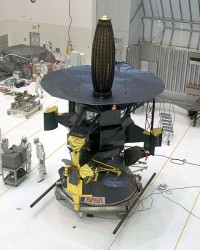
Well… nothing really.
In 2003, NASA took the prudent decision to terminate the hugely successful Galileo mission by using its last drops of propellent to push it at high speed into the gas giant. By doing so, this ensured the probe would burn up during re-entry, dispersing and burning any contaminants (such as terrestrial bacteria and the radioactive plutonium-238 fuel on board). The primary concern about letting Galileo sit in a graveyard orbit was that if mission control lost contact (very likely as the radiation belts surrounding Jupiter were degrading the probe’s ageing electronics), there may have been the possibility that Galileo would crash into one of the Jovian moons, contaminating them and killing any possible extra-terrestrial microbial life. This was a serious concern, especially in the case of Europa which could be a prime location for life to thrive below its ice-encrusted surface.
Now this is where the intrigue begins. Long before Galileo plummeted into Jupiter’s atmosphere, conspiracy theorists cited that NASA wanted to create an explosion within the body of the gas giant, thus igniting a chain reaction, creating a second sun (Jupiter is often called a ‘failed star’, although it has always been way too small to support nuclear reactions in its core). This was proven wrong on many counts, but there were three main reasons why this could not happen:
- The design of the radioisotope thermoelectric generators (RTGs) supplying energy to the craft wouldn’t allow it.
- The physics behind a nuclear explosion (nuclear fission) wouldn’t allow it.
- The physics of how a star works (nuclear fusion) wouldn’t allow it.
Five years after the Galileo impact, Jupiter still looks to be in fine health (and it certainly isn’t close to being a star). Although history has already proven you can’t create a star from a gas giant using a space probe (i.e. Jupiter + Probe ≠ Star), conspiracy theorists think that NASA’s evil plan failed and there is some evidence that something did happen after Galileo got swallowed by Jupiter (and that NASA is pinning their hopes on the Cassini/Saturn combo).
Cue the Big Black Spot
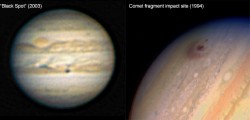
Backing up the conspiracy theorists’ claims that there was an explosion inside the Jovian atmosphere after Galileo hit was the discovery of a dark blob near the equator of Jupiter a month after the event. This was widely reported across the web, but only a couple of observations were made before it disappeared. Some explanations pointed out that the blob could have been a short-lived dynamic atmospheric feature or it was a shadow from one of the Jovian moons. After this initial excitement, nothing else surfaced about the phenomenon. However, some were keen to point out that the dark patch on Jupiter’s surface may have been a manifestation of a nuclear detonation from Galileo deep within the planet which, after a month, eventually floated to the surface. Comparisons had even made with the 1994 features generated by the impact of the pieces of Comet Shoemaker-Levy 9 (pictured above).
What ever the cause of this dark feature, it didn’t come from Galileo as a nuclear detonation simply was not possible. What’s more, a nuclear detonation from the Cassini mission when it enters Saturn’s atmosphere in 2010 is also impossible, and here’s why…
The Radioisotope Thermoelectric Generators (RTGs)
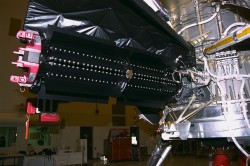
RTGs are a tried and tested technology in use since the 1960’s. Various RTG designs have been used on a huge number of missions including Pioneer 10, Pioneer 11, Voyager 1, Voyager 2, Galileo, Ulysses, Cassini and, most recently, New Horizons. RTGs are a very dependable source of power for space missions where solar panels have not been an option. For Cassini, if solar panels were used, they would need to have a huge area to collect the meagre sunlight at 10 AU, thus impractical to launch and operate.
The three RTGs on board Cassini are fuelled by small pellets of plutonium-238 (238Pu) encased separately in shock-proof containers known as general purpose heat source modules. There are 18 modules in each RTG. Through the use of thermocouples, the steady heat generated by the radioactive decay of the plutonium isotope is converted into electricity to supply Cassini. It is worth noting at this point that 238Pu is not weapon grade (i.e. it is very difficult to generate nuclear fission, 239Pu is more suited for this purpose). There are also dozens of Radioisotope Heater Units (RHUs) on board Cassini that provide a steady heat to critical subsystems, which contain single pellets of Pu-238. Again, these units are separated and shielded, each weighing 40 grams. For more details on this, check out the NASA Factsheet: Spacecraft Power for Cassini.
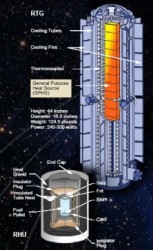
Shielding is critical for each plutonium pellet, primarily to prevent radioactive contamination during launch of space missions. Should there be an incident during launch, space agencies such as NASA must assure the containment of the radioactive material. Therefore all RTGs and RHUs are completely safe regardless of the stresses they are put under.
So, like Galileo, Cassini will hit Saturn’s atmosphere at a high velocity (Galileo hit the Jovian atmosphere at a speed of 50 km/s) and disintegrate very quickly before burning to a cinder. The point I want to highlight here is that Cassini will break apart like any fast-moving object during re-entry.
Still, conspiracy theorists are quick to point out that Cassini is carrying a huge amount of plutonium, totalling 32.8 kg (even though it is not the weapon-grade 239Pu and all the bits of 238Pu are tiny pellets, encased in damage-proof containers, being scattered through Saturn’s atmosphere). But ignoring all the logical arguments against, it will still generate a nuclear explosion, right?
Alas, no.
So how does a nuclear bomb work anyway?
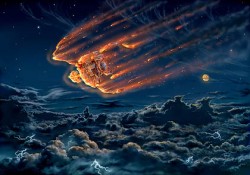
For a general run-down of the basics behind a nuclear weapon, check out the very clear description at How Stuff Works: How Nuclear Bombs Work (scroll down to “Implosion-Triggered Fission Bomb,” as this is what the conspiracy theorists believe Cassini will emulate).
So there’s Cassini, plummeting through Saturn’s atmosphere in two years time. As it gets deeper, bits fall off and burnt by the friction caused by re-entry. When I say fall off, I mean they are no longer attached. For a nuclear detonation to occur we need a solid mass of weapon grade plutonium. By solid mass, I mean we need a minimum amount of the stuff for nuclear fission to occur (a.k.a. “critical mass”). The critical mass of 238Pu is approximately 10 kg (US DoE publication), so Cassini has enough 238Pu for three crude nuclear bombs (ignoring the fact that it is very difficult to build a 238Pu weapon in the first place). But how could all those tiny pellets of 238Pu be pulled together, in free-fall, casings removed, letting the pressure of Saturn’s atmosphere force it all together tipping it toward critical mass? Is that really possible? No.
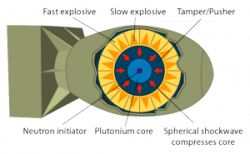
Even if by some chance all the 238Pu in one RTG melded together, how would it detonate? For detonation of an implosion-triggered fission bomb to occur, sub-critical masses need to be forced together at the same instant. The only way this is possible is to surround the sub-critical masses with high-explosives so a shock wave rapidly collapses the sub-critical masses together. Only then may a chain reaction be sustained. Unless NASA has been really sneaky and hidden some explosives inside their RTGs, detonation is not possible. Using atmospheric pressure alone is not a viable explanation.
Now we can see that it is pretty much impossible for the plutonium on board Cassini to create a nuclear explosion. But if there was a nuclear detonation, could a chain reaction occur? Could Saturn become a star?
Find out in Part 2 of Project Lucifer: Will Cassini Turn Saturn into a Second Sun?
(A special thanks goes to Selene Spencer at Paranormal Radio for highlighting this topic on their website’s discussion forum.)

